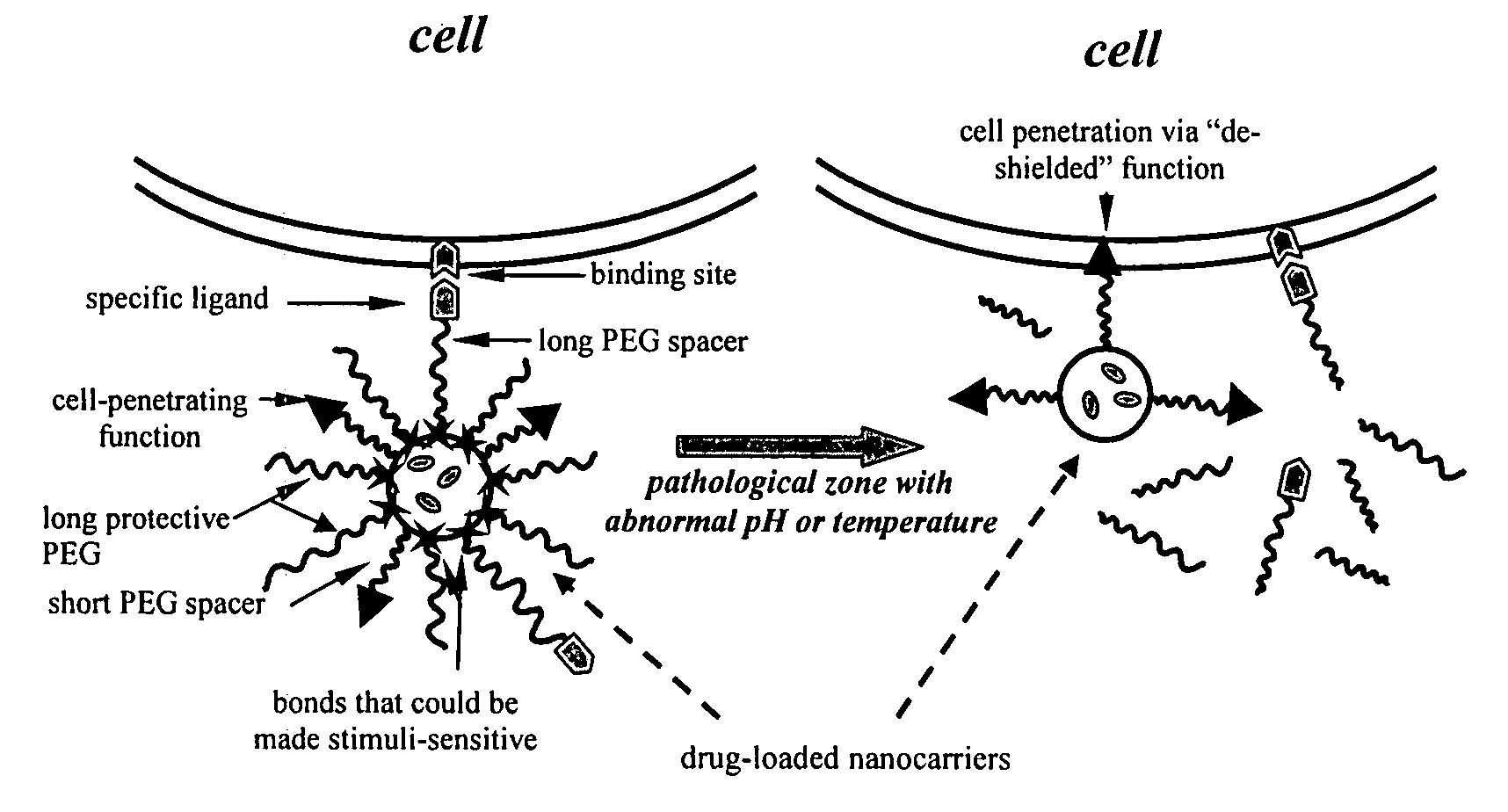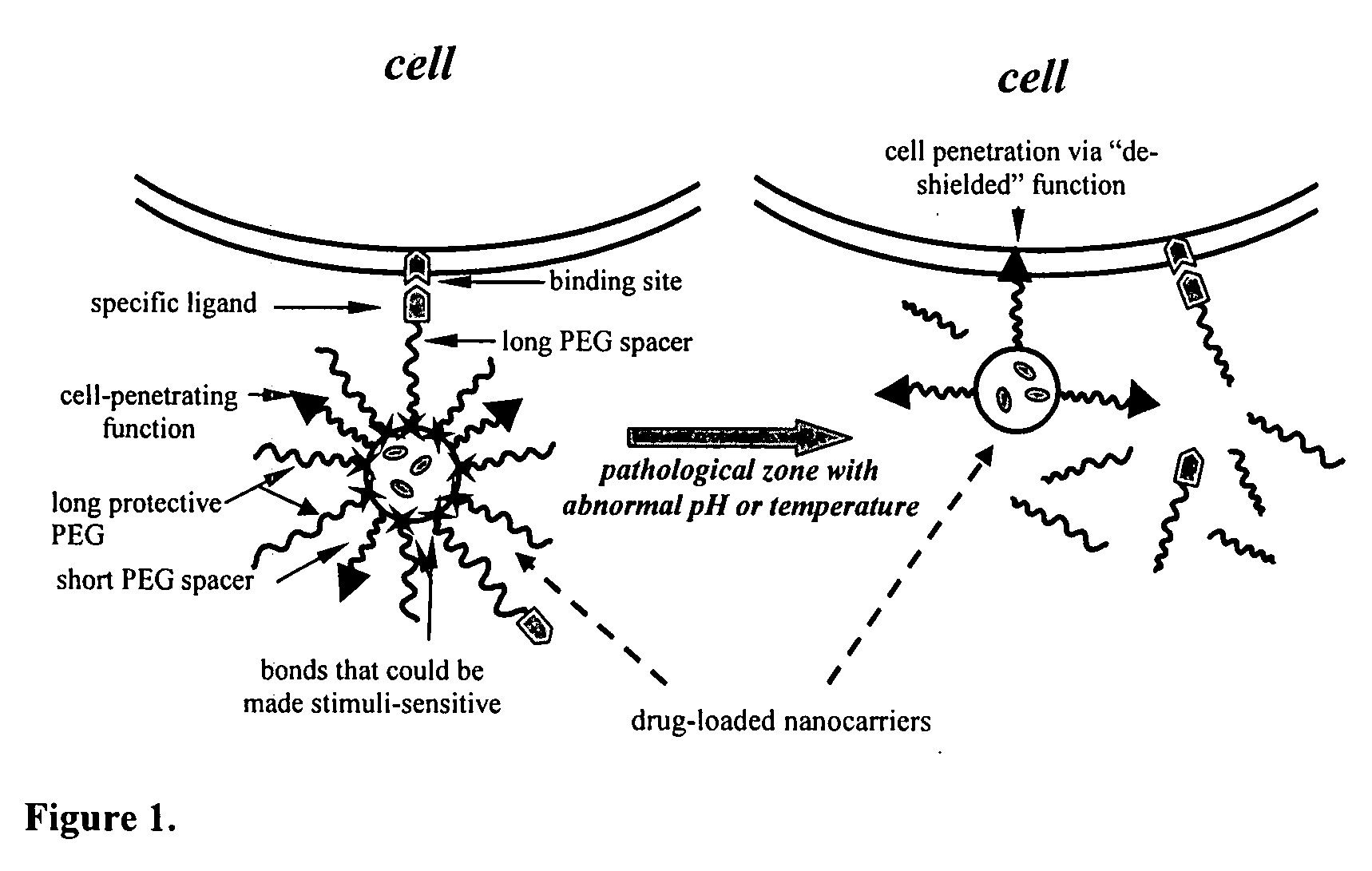Condition-dependent, multiple target delivery system
a delivery system and condition-dependent technology, applied in the direction of anti-noxious agents, peptide/protein ingredients, antibody medical ingredients, etc., can solve the problems of carrier degradation and loss, and achieve the effect of minimizing the non-specific action of the delivery system
- Summary
- Abstract
- Description
- Claims
- Application Information
AI Technical Summary
Benefits of technology
Problems solved by technology
Method used
Image
Examples
example
Model Preparation of a Multifunctional Delivery System
[0023] The particular design of the model system used is presented in FIG. 2. Referring to FIG. 2, an exemplary carrier (e.g., liposome or micelle) bears on its surface 20 (1) a “hidden” function 22 (biotin and TATpeptide moieties were used in this example) inserted into the liposome membrane or micelle core via modification with PE moiety; (2) protecting PEG chains 24 (e.g., PEG2000) attached to the surface via a pH-cleavable bond 26; and (3) specific antibody 28 attached to the surface via non-cleavable, long PEG spacers (PEG3400). In some experiments with liposomes, cleavable PEG5000-Hz-PE and non-cleavable TATp-PEG2000-PE conjugates have been used.
[0024] If the model system functions as expected, the delivery system will demonstrate specific targeted properties (via antibody-mediated recognition) at both normal (7.5-8.0) and acidic (5.0-6.0) pH values; however, the incubation of the model construct at lowered pH should elim...
PUM
| Property | Measurement | Unit |
|---|---|---|
| Fraction | aaaaa | aaaaa |
| Fraction | aaaaa | aaaaa |
| Fraction | aaaaa | aaaaa |
Abstract
Description
Claims
Application Information
 Login to View More
Login to View More - R&D
- Intellectual Property
- Life Sciences
- Materials
- Tech Scout
- Unparalleled Data Quality
- Higher Quality Content
- 60% Fewer Hallucinations
Browse by: Latest US Patents, China's latest patents, Technical Efficacy Thesaurus, Application Domain, Technology Topic, Popular Technical Reports.
© 2025 PatSnap. All rights reserved.Legal|Privacy policy|Modern Slavery Act Transparency Statement|Sitemap|About US| Contact US: help@patsnap.com



